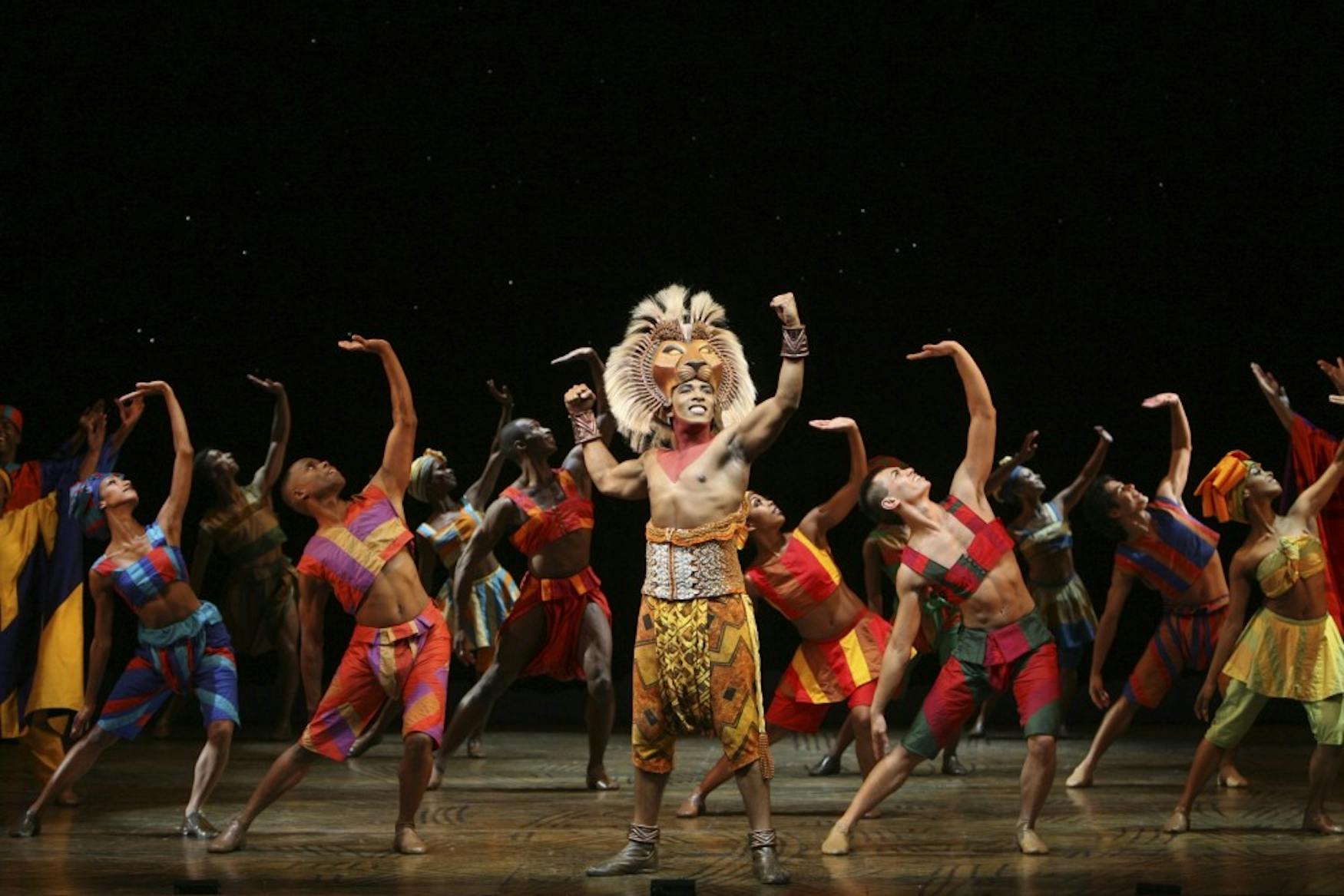‘The Lion King’ brings artistry to Boston stage
“Being brave doesn't mean you go looking for trouble!” says King Mufasa, played by L. Steven Taylor. Young adult Simba’s (Jelani Remy) contagious curiosity takes you through a jaw-dropping journey in Julie Taymor’s musical adaptation of Disney’s The Lion King at the Boston Opera House performed by an Off-Broadway national touring company.
The first scene begins with the memorable sunrise as giant anteaters begin singing “Circle of Life” from the side balconies looking over the audience. Rafiki (Tshidi Manye) leads prancing zebras, a waddling rhinoceros and a variety of other animals onstage. Rather than having the actors dress up like animals and walk on all fours, their bodies are incorporated into specific parts of the animals so they have no option but to become their role. For example, the actors playing giraffes walk on stilts attached to their hands and feet while wearing large headpieces that represent the giraffes’ long necks and small heads. In the final part of the scene, an apparatus representing Pride Rock rolls onto the stage while unraveling into a high staircase leading to the top of the cliff. At the top are King Mufasa and Queen Sarabi (Tryphena Wade), watching Rafiki present their child, Simba (Tre’ Jones), to the entire kingdom.
Not only was this scene visually captivating, but it was also incredible to see all the animals come together for the presentation of Simba at Pride Rock. The actors portrayed their characters so well that I forgot there were people on stage controlling the puppets.
From the use of puppetry to choreography to music, Taymor goes beyond her role as director to ensure that the popular musical is more than just a show but an experience. At the beginning of the very first scene, giraffes and elephants walk through the audience aisles before entering the stage. During the second act, dancers come out into the audience with birds to include the spectators in the show. Due to her involvement in costume designing and co-designing masks and puppets with puppet designer Michael Curry, Taymor’s vision brings the characters to life from the moment they step into the spotlight.
The intricacies of each costume piece and the way the actors danced and embraced their wardrobe made it nearly impossible to look away. From the colors and patterns chosen for each character to the fabrics and textures worn by the animals, Taymor truly thought of every detail to ensure the audience felt like a part of the animal kingdom.
Simba’s fearless character leads him to trouble when later facing the hyenas in the Elephant Grave Yard. Although an elephant skeleton is the only piece of the set on stage, the simplicity added an unsettling visual to the scene—simple yet disturbing. The use of rock music for Scar (Patrick R. Brown) and instrumentals from an electric guitar for the hyenas set an eerie tone while fog filled the stage floor.
Music director, Rick Snyder, used a wide variety of genres that I never imagined would come together to tell a story. Each type of character was identified through a specific sound. The comedic duo Timon (Nick Cordileone) and Pumbaa (Ben Lipitz) were tied to an upbeat and exotic jungle instrumentals while young and adult Nala (Nya Cymone Carter/Nia Holloway) jumped and turned to upbeat African drums. The unforgettable Rafiki was often musically recognized through his own wide range of vocal sounds and music.
Many scenes blended puppetry, costumes, music and choreography, which gave a new twist to storytelling within a musical production. Rather than just using songs to move the story along, these different forms of art were used to portray parts of the story without verbal communication. Musical sequences like “Can You Feel the Love Tonight” maintain a simplicity in set and props in order to draw the audience’s attention to the characters’ body language and spoken or sung message.
I appreciate the balance between the chaotic and the simpler scenes because The Lion King has so many elements within the story that it would have been easy overwhelm the audience by presenting too much on stage at once.
The innovation presented by this production through the use of choreography, puppetry and other art forms will without a doubt capture audiences throughout the nation.



Please note All comments are eligible for publication in The Justice.